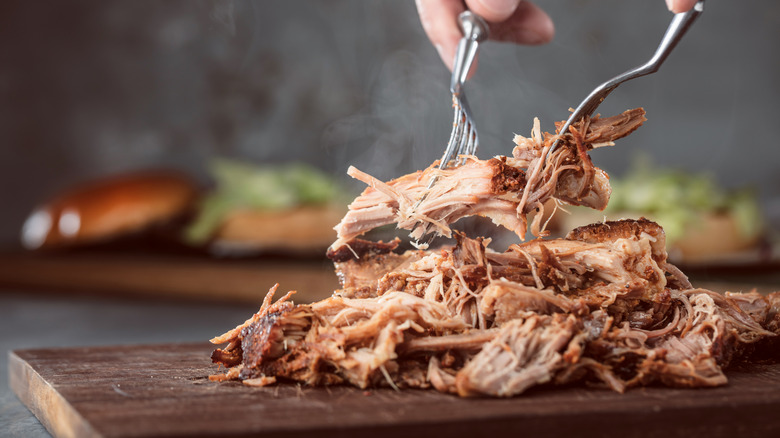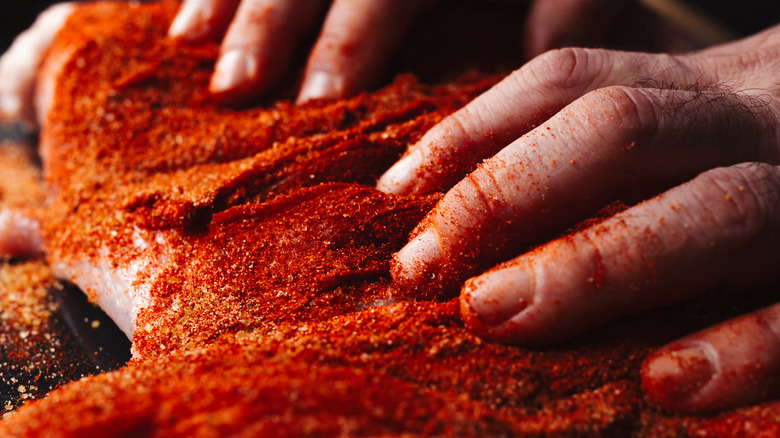This Is The Absolute Best Method For Adding A Rub To Pulled Pork
Smoked pulled pork is a recipe that demands time and effort but the end result is undeniably worth it. When prepared correctly, the pork becomes incredibly juicy and tender, falling apart with a gentle fork pull. In terms of flavor, plain pulled pork is already delicious thanks to the rendered fat and smoky notes. However, you can elevate it to the next level by applying a flavorful seasoning rub to the pork before placing it in the smoker.
Thankfully, the process of applying a rub is quite straightforward. Assuming you already have a good dry rub on hand, start by patting the cut of pork dry with paper towels to remove any surface moisture. Excess moisture on the skin can hinder the rub from adhering properly. Then, start coating the pork in a generous layer of your dry rub. Since pork cuts have uneven surfaces and various angles, be thorough to ensure an even layer of rub all over the pork.
After applying the rub, allow the seasoned pork to rest uncovered in the refrigerator overnight. For best results, place it on a rack inside a baking sheet to ensure better airflow around the pork, which will promote even drying. This step enhances the flavors from the rub, allowing them to penetrate the meat more deeply. When it's time to cook, take the pork out of the fridge and let it come to room temperature. Now you're all set — just place it in the smoker, and you're good to go!
The key to making the perfect pulled pork dry rub
Don't have a great dry rub for your pork yet? No problem, it's actually quite easy to create a delicious one. An easy dry rub recipe can have as few as three ingredients and still work wonders in enhancing the pork's flavor. For a well-rounded rub, though, you need to consider four key elements: sweetness, savoriness, spiciness, and aroma. To add sweetness, you can use brown sugar or molasses. Those ingredients will balance out the heat from spices like cayenne pepper or paprika once they start to be caramelized by the smoker's heat. For savory notes, turn to salt and garlic or onion powder. Finally, for an extra aromatic touch and to add more complexity to the flavor, you can add dried herbs like thyme or oregano to your rub.
The real fun comes from experimenting and crafting your unique rub. Think about regional flavors or your personal taste preferences. For example, a Southern-style rub might pack more heat and sweetness since they typically use more cayenne and paprika. By contrast, a more savory rub might emphasize salt, garlic, and herbs. Beyond the choice of ingredients, the ratio of each component can also vary in different dry rub recipes. If you're unsure about the right balance to suit your taste, start with equal parts. You can gradually fine-tune the proportions of the ingredients to your liking as you go along.

